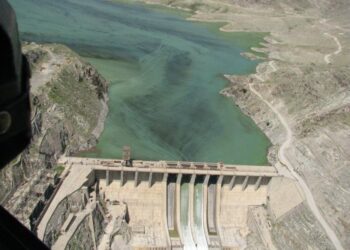Written by: Abdul Basit Alvi
While the Indian Army is frequently portrayed as larger and better resourced, many argue that the Pakistan Army matches—and in several key areas surpasses—its Indian counterpart through superior strategy, discipline, professionalism, and combat readiness. The debate over which military holds the upper hand has continued for decades, influenced by historical conflicts, border tensions, and deep-rooted ideological divides. However, raw numbers alone do not determine military strength—factors such as effectiveness, discipline, morale, and strategic foresight are often more decisive. In these critical aspects, the Pakistan Army consistently demonstrates a significant edge.
A cornerstone of the Pakistan Army’s strength lies in its high standards of professionalism and internal discipline. The Pakistan Military Academy (PMA) in Kakul is renowned for producing officers and soldiers of exceptional quality. Training at PMA emphasizes not only physical endurance but also strategic acumen, national ideology, and leadership under pressure. Promotions are largely merit-based, and the military has preserved a strict internal hierarchy and code of conduct. By contrast, the Indian Army has struggled with maintaining uniform professionalism across its ranks. Reports over the years have pointed to instances of indiscipline, politicization, caste-based discrimination, and favoritism in promotions. Indian soldiers have even taken to social media to highlight concerns over poor food, substandard living conditions, and corruption within the ranks—signs of deeper issues that challenge the cohesion and morale of the force.
The Pakistan Army is also a battle-hardened force, having spent decades engaged in counterinsurgency and anti-terror operations, especially in the tribal regions and along the Afghan border. Campaigns such as Zarb-e-Azb, Rah-e-Nijat, and Radd-ul-Fasaad have showcased Pakistan’s proficiency in modern asymmetric warfare. The army has developed agile, mobile units, refined urban combat strategies, and integrated real-time intelligence sharing with the ISI. In contrast, the Indian Army’s experience in dealing with insurgencies has yielded mixed results. Prolonged unrest in Indian Illegally Occupied Jammu and Kashmir (IIOJK), along with widespread allegations of human rights violations, has hurt the army’s image and highlighted persistent political and operational challenges. India has struggled to produce decisive outcomes, revealing a gap in adapting to the demands of modern hybrid warfare.
Pakistan’s strategic doctrine is shaped by the need to counter a numerically superior adversary. It emphasizes speed, precision, and deterrence, embodied in its “Full Spectrum Deterrence” strategy and the development of tactical nuclear capabilities, such as the Nasr missile. These advances have provided Pakistan with credible second-strike options and a strong defensive posture, effectively countering India’s Cold Start Doctrine. India, despite possessing a larger nuclear arsenal, has faced difficulties operationalizing Cold Start, due to issues with strategic clarity and slow military mobilization. The 2019 Pulwama-Balakot incident highlighted these shortcomings: India’s airstrikes achieved limited impact, and Pakistan’s swift military response—including the downing of an Indian fighter jet—exposed flaws in India’s operational planning and inter-service coordination.
Finally, intelligence is a critical component of military strength, and Pakistan’s Inter-Services Intelligence (ISI) stands out as one of the most capable intelligence agencies in the world. The ISI has played a decisive role in disrupting terrorist networks, executing intelligence-led operations, and countering external threats, further strengthening Pakistan’s military posture. The ISI’s close coordination with the military during internal operations has been crucial to achieving success on the ground. In contrast, India’s Research and Analysis Wing (RAW) lacks the same level of integration and operational effectiveness in the field. RAW has been criticized for several significant lapses, including its failure to prevent high-profile attacks such as those in Pathankot and Pulwama. Meanwhile, the ISI has played a key role in thwarting major terrorist threats within Pakistan in recent years and has consistently demonstrated an ability to outmaneuver Indian intelligence efforts in the region. A common misconception is that a larger defense budget automatically translates into greater military capability. Yet, Pakistan has consistently demonstrated how strategic focus and efficient resource utilization can outperform sheer spending. Rather than emphasizing quantity, Pakistan’s defense industry prioritizes quality and tactical value. A prime example is the JF-17 Thunder fighter jet, co-developed with China, which exemplifies Pakistan’s growing indigenous defense capabilities. Its affordability, versatility, and combat readiness make it a vital asset for both air superiority and close air support roles.
Despite its significantly larger defense expenditure, India’s military often struggles with outdated equipment, sluggish procurement processes, and an overly bureaucratic acquisition system. Many Indian Army units still rely on Soviet-era tanks and artillery, while modernization projects frequently face prolonged delays. In contrast, Pakistan has made notable strides in updating its missile systems, unmanned aerial vehicles (UAVs), and command-and-control infrastructure.
Perhaps the most critical component of military effectiveness is morale and ideological commitment. The Pakistan Army emphasizes Islamic values, national pride, and the defense of the Ummah, all of which serve as powerful motivational pillars. Pakistani soldiers, whether stationed in the harsh deserts of Sindh or the freezing heights of Siachen, consistently display resilience, loyalty, and a high level of dedication. The army’s emphasis on internal cohesion and spiritual strength fosters a uniquely committed fighting force.
By comparison, the Indian Army faces ongoing morale challenges. Reports of high suicide rates, internal dissent, dissatisfaction with pay and conditions, and unresolved grievances are widespread. Moreover, divisions based on caste and religion continue to undermine unit cohesion, weakening long-term operational readiness and troop morale.
Strategically, Pakistan’s geographic position—bordering China, Iran, Afghanistan, and India—places it at the center of key regional dynamics. The Pakistan Army has effectively leveraged this position by fostering strong defense partnerships with countries such as China, Turkey, Saudi Arabia, and Qatar. These relationships, strengthened through joint exercises, weapons development, and military diplomacy, have bolstered Pakistan’s regional and global military standing.
India, on the other hand, has struggled to maintain consistent regional alliances. Persistent tensions with neighbors like China and Pakistan, along with internal political instability, have hindered its efforts to project itself as a reliable regional power. In contrast, Pakistan’s military diplomacy, particularly across the Muslim world, remains strategic, cohesive, and aligned with long-term national interests.
In the realm of air power—a defining factor in modern warfare—South Asia is dominated by the Pakistan Air Force (PAF) and the Indian Air Force (IAF). While the IAF enjoys greater size and budgetary resources, the PAF frequently excels in key performance areas such as pilot training, operational readiness, combat effectiveness, and strategic flexibility.
The underlying difference lies in doctrine and organizational philosophy. The Pakistan Air Force is built as a lean, highly agile, combat-focused force, structured to respond rapidly to any threat—particularly from the east. This has instilled a continuous state of operational readiness across all levels of the PAF. Conversely, the IAF operates within a broader bureaucratic framework, often slowed by political considerations, logistical challenges, and limited joint-force integration. Issues such as interoperability and command structure inefficiencies have hampered its overall effectiveness.
Ultimately, one of the most decisive indicators of an air force’s strength is the skill and preparedness of its pilots—and in this domain, the Pakistan Air Force maintains a formidable reputation. In this regard, the Pakistan Air Force maintains a clearly established advantage. Pakistan has consistently prioritized intensive pilot training, emphasizing realistic combat simulations, rapid decision-making, and mastery of air superiority tactics. Pakistani pilots are regularly recognized for their exceptional skill in international settings. In fact, during joint exercises, the United States Air Force and several NATO allies have repeatedly ranked Pakistani fighter pilots among the finest they have trained or flown alongside. The Pakistan Air Force (PAF) has earned widespread recognition for its precision and professionalism during international exercises, including its participation in the U.S.-based Red Flag and Green Flag drills. These exercises highlighted the PAF’s strong tactical discipline and combat effectiveness. In contrast, the Indian Air Force (IAF) has often been criticized for its relatively limited real-world combat experience and reliance on outdated Soviet-era doctrines. Although India regularly conducts joint exercises with foreign forces, its pilot training program has faced scrutiny due to a comparatively high rate of accidents and aircraft crashes per flight hour. PAF’s long-standing culture of maintaining high operational readiness sets it apart. Efficient aircraft maintenance, systematic pilot rotation, and rapid deployment capabilities are core strengths.
The Pakistan Air Force has also modernized its air defense systems, incorporating advanced radar technology, electronic warfare capabilities, and mobile surface-to-air missile batteries to enable real-time threat tracking and response. Despite India’s heavy investment in modernization, its military continues to struggle with logistical inefficiencies and interoperability issues, often delaying real-time operational coordination.
Although India boasts a larger and more diverse fleet—including Rafale jets, Su-30MKIs, and the indigenous Tejas—the advantages of this arsenal are frequently undermined by procurement delays, maintenance backlogs, and poor serviceability. For example, the Su-30MKI, a backbone of the IAF, has faced persistent issues with upkeep and availability.
In contrast, the PAF emphasizes quality and cost-effectiveness. Its investment in the JF-17 Thunder program, developed in collaboration with China, has produced a lightweight, multi-role fighter that is affordable, easy to maintain, and combat-ready. The latest JF-17 Block III variant features advanced capabilities such as Active Electronically Scanned Array (AESA) radar, electronic warfare systems, and beyond-visual-range (BVR) missiles—placing it on par with many 4.5-generation fighters.
Additionally, Pakistan’s integration of the F-16 Fighting Falcon—a globally respected multirole aircraft—has significantly strengthened its aerial capabilities. The F-16 has consistently demonstrated its value in both simulated and real-world combat, including the 2019 skirmish. In contrast, India’s indigenous Tejas program has been hampered by delays, budget overruns, and persistent performance issues. Despite taking over three decades to reach full operational status, the Light Combat Aircraft (LCA) Tejas still faces limited deployment due to ongoing technical refinements.
Pakistan’s collaborative approach to military development, particularly through its partnership with China, has proven far more efficient. By aligning defense objectives with economic feasibility, the PAF has modernized swiftly without overextending national resources. Its procurement strategy remains focused on operational needs rather than political optics.
The leadership of the Pakistan Air Force has consistently comprised technically proficient, battle-hardened officers who prioritize discipline, adaptability, and innovation. Its decentralized command structure grants base commanders considerable autonomy in tactical decision-making, enabling swift and effective responses during combat operations. In contrast, the leadership of the Indian Air Force (IAF) often finds itself constrained by political bureaucracy and ongoing civil-military friction. Strategic development has been hampered by procurement delays, indecisiveness in defense acquisitions, and a slower pace in adopting emerging technologies such as artificial intelligence and cyber warfare tools.
When comparing naval capabilities, India possesses one of the largest navies globally in terms of fleet size, budget, and maritime footprint. However, the Pakistan Navy (PN) distinguishes itself through a focused strategic doctrine, modernization efforts aligned with real-world threats, and an operational philosophy centered on agility, deterrence, and coastal control. The core distinction between the two forces begins with their strategic orientation. The Pakistan Navy follows a pragmatic, defense-oriented doctrine aimed at maintaining regional deterrence, securing sea lines of communication (SLOCs), and protecting its 1,046 km coastline, including key ports like Gwadar and Karachi.
Central to Pakistan’s naval doctrine is the concept of “minimum credible deterrence,” which seeks to establish strategic parity without fueling an arms race. The PN emphasizes asymmetric warfare capabilities—such as stealth operations, submarine-based deterrence, and missile systems—to counterbalance India’s numerical superiority. On the other hand, the Indian Navy pursues a blue-water strategy with ambitions of global maritime presence and force projection beyond the Indian Ocean. While this vision appears impressive, it often overextends the force, diverting attention from immediate regional challenges—particularly along India’s western seaboard—where Pakistan maintains a concentrated and purpose-driven presence.
India’s fleet comprises over 150 vessels, including aircraft carriers, destroyers, frigates, submarines, and amphibious assault ships. However, a large fleet does not inherently guarantee combat effectiveness. The Pakistan Navy, though smaller with approximately 50–60 active ships, has consistently focused on acquiring advanced, mission-specific platforms. It operates modern Chinese-built Type 054A/P frigates and Agosta-90B submarines, and is in the process of acquiring the Hangor-class submarines—all outfitted with sophisticated sonar systems, low observability features, and precision missile capabilities. These assets are well-suited for stealth operations, anti-access/area denial (A2/AD) missions, and robust coastal defense.
In contrast, India’s naval procurement has sometimes lacked coherence, with delays in shipbuilding projects and complications in integrating new technologies. The INS Vikramaditya aircraft carrier has faced recurrent maintenance and operational issues, while India’s indigenous submarine program has experienced significant setbacks. Pakistan, by comparison, has pursued a leaner and more agile approach, investing in technologically advanced yet cost-effective platforms. This strategy has enabled quicker deployment cycles and a more combat-ready fleet.
The Pakistan Navy has also strengthened its strike capabilities by incorporating advanced surface-to-surface and anti-ship weapons, such as the Harbah Naval Cruise Missile, enhancing its offensive reach. Pakistan holds a notable edge in the underwater warfare domain. The PN’s Agosta-90B submarines, equipped with Air-Independent Propulsion (AIP) systems, can remain submerged for extended periods—an essential feature for stealth deterrence.
In 2016, the Pakistan Navy initiated Project Hangor, aimed at acquiring eight advanced submarines based on China’s S26 design. A key feature of this initiative is domestic production, with several submarines to be built at Karachi Shipyard & Engineering Works. This not only enhances Pakistan’s submarine capabilities but also ensures long-term sustainability and self-reliance in naval construction. Although India maintains a larger submarine fleet, it includes aging Soviet-era vessels that are often hampered by low serviceability and limited operational readiness. The Scorpène-class submarines, while modern and capable, have been plagued by repeated delays in production and deployment. In contrast, Pakistan’s steady investment in submarine warfare has provided it with a clear tactical edge in the region—particularly in the Arabian Sea, where underwater stealth plays a critical role in surveillance, area denial, and strategic deterrence. The Pakistan Navy’s expanding naval aviation wing plays a pivotal role in maritime operations, featuring platforms such as the ATR-72 Maritime Patrol Aircraft (MPA), P-3C Orion, and Sea King helicopters. These assets are integral to anti-submarine warfare (ASW), long-range surveillance, and search-and-rescue missions. In comparison, the Indian Navy has faced setbacks due to budgetary limitations and delayed procurement. Notably, the induction of the MH-60R Seahawk helicopters from the United States has been slow to reach full operational capability.
Pakistan’s strategy of deploying a smaller but highly capable fleet of air assets—specifically designed for regional ASW and maritime surveillance—ensures more focused coverage over the North Arabian Sea. Despite their age, Pakistan’s P-3C Orion aircraft have been extensively modernized with advanced sensors and electronics, giving the Navy reliable airborne reconnaissance and targeting capabilities.
One of the Pakistan Navy’s most significant strategic milestones is the successful development of its second-strike capability through the Babur-3 Submarine-Launched Cruise Missile (SLCM), first tested in 2017. This weapon system provides Pakistan with a credible sea-based nuclear deterrent, crucial for ensuring retaliatory capability in the event of a first-strike scenario. While the Indian Navy operates nuclear submarines like the INS Arihant, its sea-based deterrent posture has seen inconsistent progress. Arihant’s first deterrence patrol occurred years after commissioning, and India’s missile tests from sea platforms have not matched the consistency of Pakistan’s efforts. The Babur-3 thus serves as a stealthy, survivable nuclear deterrent, reinforcing Pakistan’s strategic balance.
Modern naval warfare now extends well beyond traditional platforms, and the Pakistan Navy has made notable advances in electronic warfare (EW). It has invested in systems capable of jamming, deceiving, or neutralizing enemy communications and sensor networks. Additionally, Pakistan has developed a robust coastal defense architecture, anchored by strategically located naval bases in Ormara, Gwadar, and Karachi. These installations, reinforced under the China-Pakistan Economic Corridor (CPEC) maritime security framework, provide the Navy with a multi-layered defense posture and ensure the protection of vital maritime trade routes.
India, with its vast coastline and global maritime aspirations, faces the challenge of maintaining a widespread naval presence across multiple theaters. This dispersal of forces often results in diluted concentration in any single operational zone, particularly along the western seaboard. In contrast, the Pakistan Navy maintains a regionally concentrated posture, enhancing its readiness and tactical cohesion.
Diplomatically, the Pakistan Navy has cultivated strong international relationships through active participation in multinational maritime exercises. Notably, the biennial AMAN exercise brings together over 45 countries, including major naval powers such as the U.S., China, Turkey, and the UK. These engagements strengthen Pakistan’s interoperability, build regional trust, and enhance naval diplomacy. While India participates in prominent exercises like Malabar alongside the U.S., Japan, and Australia, these are often linked to Indo-Pacific strategic posturing, which can divert focus from immediate regional security needs.
Pakistan’s naval doctrine remains firmly grounded in defending its maritime borders and promoting stability in the Arabian Sea and Persian Gulf—regions vital to its economic security and national defense.
Across all branches—the Pakistan Army (PA), Pakistan Navy (PN), and Pakistan Air Force (PAF)—the Pakistani military has consistently demonstrated tactical proficiency and operational superiority during various conflicts and engagements with India. One of the most defining moments in South Asian military history took place during the Battle of Chawinda in the 1965 Indo-Pak War. As part of Operation Grand Slam, Indian forces aimed to breach Pakistani defenses and seize Sialkot, with the strategic objective of severing key communication links between Lahore and northern Pakistan. India deployed its 1st Armoured Division, along with supporting infantry brigades, in what became one of the largest tank engagements since the Second World War. The Pakistan Army, under the leadership of General Tajammul Hussain Malik and supported by the 6th Armoured Division and the 25th Cavalry Regiment, known as the “Men of Steel,” heroically repelled the Indian advance. Despite being outnumbered and facing inferior equipment, the Pakistani forces held firm and launched successful counterattacks, ultimately forcing the Indian Army to retreat. This battle became a key psychological and strategic victory for Pakistan, symbolizing national resilience and military excellence.
During the Kargil Conflict (also known as the Kargil War), the initial achievements of Pakistani troops, particularly the Northern Light Infantry, were remarkable. Under the command of General Pervez Musharraf, Pakistani forces infiltrated and captured critical heights and ridgelines along the Line of Control (LoC) in the Kargil sector. These positions gave Pakistan control over vital Indian supply routes to the Siachen Glacier. The Indian Army faced significant difficulty in dislodging the entrenched Pakistani forces, suffering heavy casualties. The surprise factor, superior positioning, and effective use of the terrain initially gave Pakistan a clear tactical advantage. Although international pressure led to a Pakistani withdrawal, the military effectiveness displayed by Pakistani troops in high-altitude warfare, and their early operational success, was undeniable. Indian generals later admitted to underestimating the challenge, recognizing the bravery and combat prowess of Pakistani soldiers.
Though India captured Siachen in 1984 during Operation Meghdoot, maintaining control has come at a high cost. Pakistani forces, using high-altitude guerrilla tactics, have consistently carried out successful skirmishes and raids, inflicting heavy casualties on Indian forces and creating significant logistical challenges. While not involving large-scale battles, Pakistan’s sustained resistance in the extreme terrain of Siachen highlights the combat capability and endurance of its army. Despite limited resources, Pakistani soldiers have made India’s control of Siachen increasingly costly and tenuous.
During the 1965 Indo-Pak War, the Pakistan Navy launched Operation Dwarka on the night of September 7, 1965. A flotilla of seven warships, led by the destroyer PNS Babur, sailed 200 nautical miles into Indian waters and bombarded the coastal town of Dwarka in Gujarat. The operation aimed to neutralize the Indian radar station believed to be directing air raids over Karachi. It succeeded in destroying critical infrastructure and created psychological panic within the Indian naval command. Notably, major Indian naval units, including INS Vikrant, remained in port, avoiding engagement—a significant morale boost for Pakistan. Operation Dwarka demonstrated the Pakistan Navy’s boldness and offensive capabilities, especially in contrast to the passive response of the Indian Navy.
Perhaps the most remarkable naval victory came during the 1971 Indo-Pak War when the Pakistan Navy submarine PNS Hangor, commanded by Ahmad Tasnim, sank the Indian Navy frigate INS Khukri off the coast of Gujarat. This marked the first time a submarine had sunk a warship since World War II, resulting in the loss of over 180 Indian sailors, including the ship’s captain. The attack sent shockwaves through the Indian Navy and forced a reevaluation of its Anti-Submarine Warfare (ASW) strategies. The success of the PNS Hangor remains one of the most legendary feats in naval warfare, showcasing the Pakistan Navy’s technical expertise, stealth, and courage under pressure. Despite India’s attempt to impose a naval blockade on Karachi, Pakistan Navy ships like PNS Alamgir and PNS Shamsher successfully evaded the Indian cordon, conducting resupply missions and escorting merchant vessels through contested waters. The Pakistan Navy’s tactical maneuvers during the 1971 war in maintaining sea access under intense pressure were widely praised.
In the 1965 War, the Pakistan Air Force dealt a devastating blow to the Indian Air Force. Despite being outnumbered nearly 3:1, the PAF achieved air superiority in multiple sectors. Legendary pilots like M. M. Alam made history, famously downing five Indian aircraft in under a minute while flying the F-86 Sabre. The PAF destroyed more than 60 Indian aircraft, while losing fewer than 20, delivering a resounding imbalance in favor of Pakistan. This performance was acknowledged by impartial observers, with numerous foreign analysts recognizing the PAF’s superior training, tactics, and execution. A more recent and highly visible example of PAF’s dominance occurred during the 2019 Balakot crisis. Following a controversial airstrike by the Indian Air Force near Balakot, within Pakistani territory, Pakistan launched Operation Swift Retort on February 27, 2019, in response. The Pakistan Air Force carried out a precise retaliatory strike, targeting unoccupied Indian military positions to demonstrate strength while avoiding escalation. During the subsequent air battle, PAF pilots successfully shot down an Indian MiG-21 Bison and captured its pilot, Wing Commander Abhinandan Varthaman. The Indian Air Force’s claim of downing a Pakistani F-16 was widely debunked by impartial analysts, including U.S. officials. The PAF’s actions demonstrated superior tactical planning, dominance in electronic warfare, and discipline in adhering to rules of engagement, resulting in a significant psychological and strategic victory. During Operation Swift Retort in 2019, Pakistani pilots effectively jammed Indian radar and communication systems, creating confusion within the Indian Air Force. This showcased the PAF’s advanced electronic warfare capabilities, catching the IAF off-guard despite its larger fleet and higher budget. Historically and in modern contexts, Pakistan’s armed forces have consistently exceeded expectations, often defeating or outmaneuvering their Indian counterparts in critical tactical and strategic situations. Whether through the Pakistan Army’s battlefield resilience, the Navy’s audacious submarine operations, or the PAF’s unparalleled aerial precision, Pakistan’s military successes demonstrate that skill, strategy, and courage can overcome sheer numbers. Each of these instances—Chawinda, Hangor, and Swift Retort—represents more than just military victories; they embody a national doctrine of resilience, strategic focus, and operational excellence. While diplomatic efforts and peace are the ideal resolutions, Pakistan’s defense history serves as a reminder that deterrence and preparedness are essential. Pakistan, while striving for peace and coexistence, has always remained steadfast in defending its sovereignty, whereas India has increasingly adopted a more aggressive regional and military stance.
Pakistan takes great pride in the performance of its military, which has consistently outperformed the Indian Army on various fronts. General Syed Asim Munir, Pakistan’s Chief of Army Staff since November 2022, has made clear the military’s unwavering commitment to defending the nation against any form of aggression. His statements reflect a resolute determination to safeguard Pakistan’s sovereignty, territorial integrity, and national interests.
The Pakistani nation firmly believes that its defense is in safe hands, with the Pakistan Army fully committed to protecting every inch of the country in the event of aggression. The Pakistan Army has successfully reassured the nation that its security is in capable hands. The people of Pakistan stand united with the Army and take pride in having such dedicated defenders of the homeland. India should learn from history and avoid any form of aggression.

























